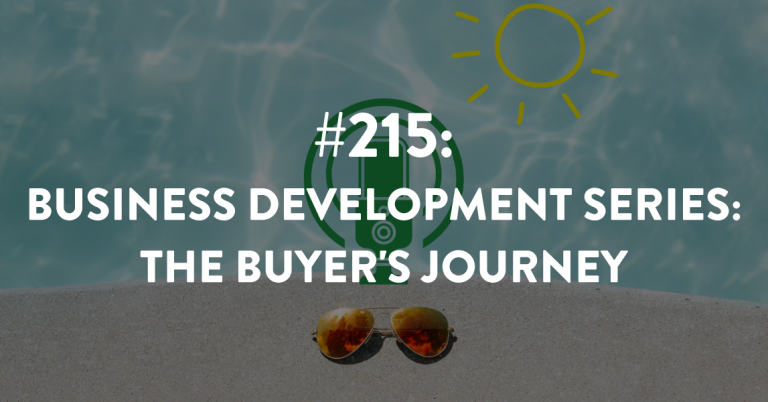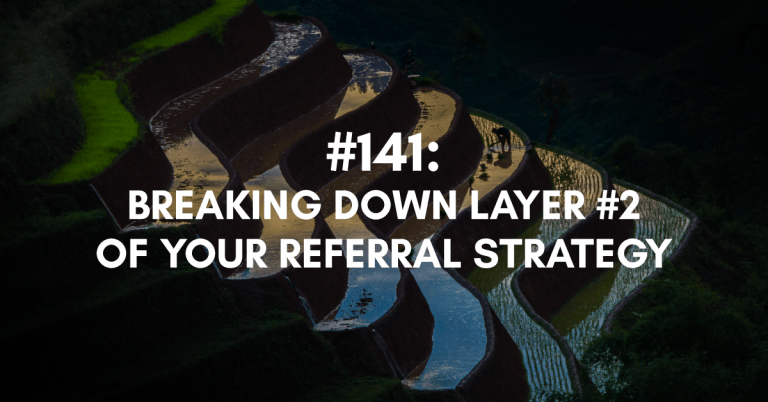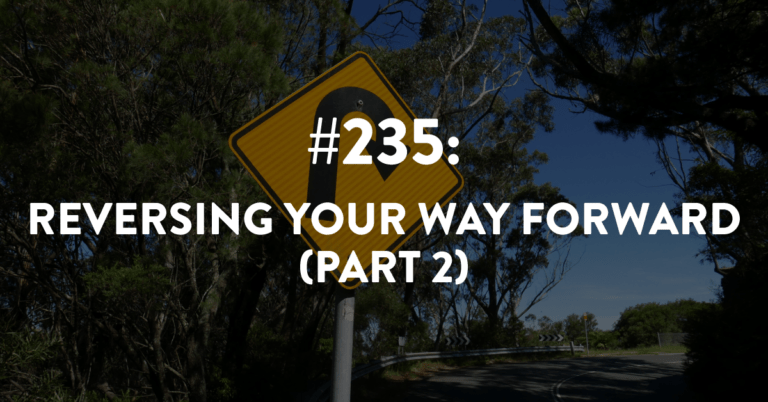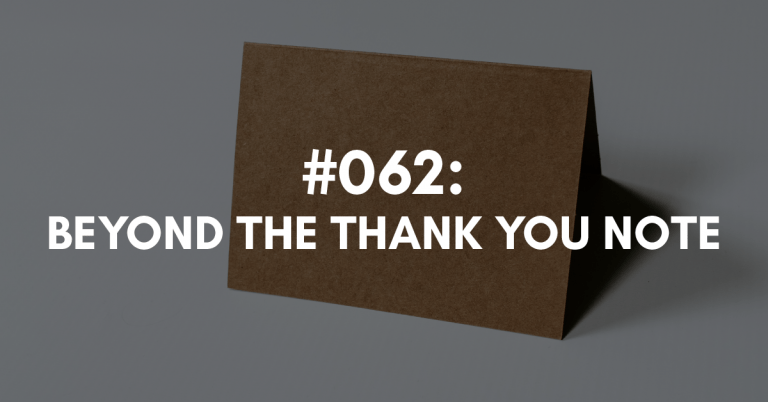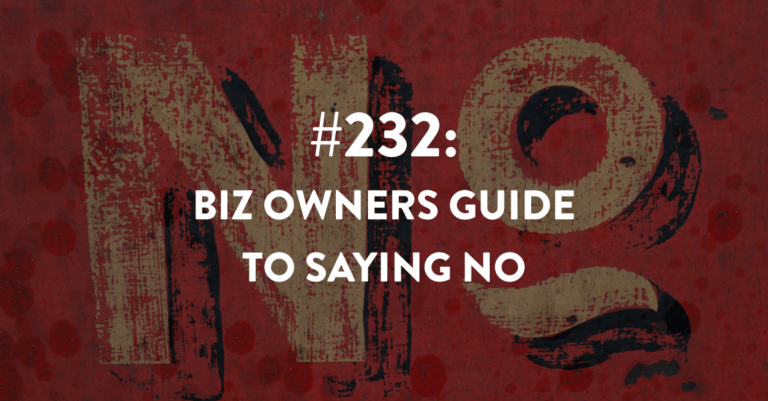Ep #314: How I Solved…Making Videos for Marketing
Our next business owner is an estate planning attorney, explaining how he solved a video marketing problem that had haunted him for years.
Neil Tyra realized the importance of video content marketing in the legal industry and overcame his initial hesitations and challenges to create engaging video content for his practice.
He discusses the impact of incorporating video content into his marketing strategy and how it transformed his practice.
Here are three key takeaways from my insightful conversation with Neil:
Video Content is King: Neil’s journey into video marketing highlights the importance of creating valuable video content for your audience. By addressing common questions and topics in his videos, Neil established trust and credibility with his viewers, which increased engagement and client conversions.
Consistency is Key: Neil’s commitment to producing new weekly videos showcased the power of consistency in content creation. By setting a schedule and holding himself accountable, Neil saw significant growth in his practice and online presence.
Accessibility and Support: Neil found a solution that made video marketing accessible and manageable. With the support and structure provided by that platform, Neil overcame his initial hesitations and dove into the world of video content creation.
This episode highlights the importance of incorporating video content into marketing strategies and how it can significantly impact business growth and client engagement.
Neil’s journey showcases the power of consistency, accountability, and valuable content in building a successful referral-based business.
Links Mentioned During the Episode:
Visit Neil’s website
Listen to Neil’s first interview on the podcast, episode #014
Check out Video Socials
Next Episode:
Next episode is #315, which is another episode created with you and your needs in mind.
Download The Full Episode Transcript
Read the Transcript Below:
Stacey Brown Randall: The summer series continues as I am asking business owners just like you to fill in the blank of this question: “How did you solve… (insert their biggest business problem)”, in some cases, that’s haunted them for years. Alright, we’ve got another great interview coming up. Let’s dive in.
Hey there, and welcome to episode 314 of the Roadmap to Referrals podcast, a show about helping you build a referable business. I’m your host, Stacey Brown Randall. My journey from business failure to a successful business now 10 years in, I know generating referrals naturally and consistently has made all the difference. Working with clients around the world, we leverage the science of referrals, protect relationships above all else, and help you build a referable business.
Alright, this week up on the podcast for the summer series, where we are asking a business owner to tell us how they solved a problem that they didn’t know how to solve because it was out of their zone of genius, we have Neil Tyra.
Now, Neil has been on the podcast before. You’ll hear us talk about that just a little bit, but he has been on the podcast before. And I was excited to welcome him back. Now, of course, he’s talking about something totally different. Back then, he was talking about his business and referral generation and being a client of mine.
And this is like way back in like, I think 2016, maybe 2017. I can’t really remember now. It feels like the years have gone. That’s when he was back when he was a client. But we talk a little bit about that before we dive into his interview. But he is going to talk about how he solved the issue of creating video content.
We know, I say this laughingly because this is an audio-based podcast, and I have been told for years I should turn it into a video-based podcast so I could have more videos to put on YouTube. And quite frankly, I just don’t want to.
I don’t have any other better answer than that. I just don’t want to do it. Maybe I will one day. We’ll see. I also didn’t want to write a book, and then I did, and I didn’t want to start a podcast, and I did. So who knows? I can do hard things too.
But what Neil is going to talk to us about is how he solved making those videos happen and then being something that his ideal prospect would actually be searching for and would actually be something that they wanted to know more about and would help him really increase that marketing that he was working on doing.
Now, you know, I believe that you should always, always, always have more than one way that you’re going to bring clients into your business. So, way back in the day, a number of years ago, when we solved his referral thing, right, we solved that referral issue. Now he’s getting referrals, and that is a great way for him to continue to generate more business.
Then he was like, okay, now I need to make it a little bit better. And the next thing I’m going to focus on is video marketing. And he’s going to talk about how he built out video content. So I’m excited for you guys to listen to this interview. Let’s dive in with Neil.
Stacey Brown Randall: Neil, it is always a pleasure to have a dear, dear friend come on the podcast. I don’t always get to have people come back on my podcast for a second time.
So for those of you who are like, oh, Neil was on the podcast before? Yes. All the way back in episode 14, Neil, can you believe it’s been that long since you’ve been on my podcast?
Neil Tyra: I can’t, I didn’t realize I was such a trendsetter back in the day.
Stacey Brown Randall: You were. Episode 14. That was like when it all began.
Neil Tyra: And I would do anything to be on your podcast, Stacey. So it’s really a joy to be back.
Stacey Brown Randall: Well, thank you so much. I very much appreciate that. Okay, so before we dive into talking about how you solved your video marketing problem, why don’t you tell my audience just a little bit about you?
Neil Tyra: Sure. Well, I’m an attorney. I’m an estate planning attorney in Rockville, Maryland, which is just outside Washington, D.C. I’m in a solo practice. I own my own practice. I am the sole attorney in the practice, although I have a lot of virtual staff that support me.
And law is my fourth career. I went to law school very late in life. As a result, I’m very old now, in part because I can’t decide what I want to be when I grow up. And what I’ve realized is I haven’t grown up because I’m still trying to reinvent myself. So while law is my fourth career, I’ve embarked more recently on a musical career, which might be my fifth career. So that’s my story in a nutshell.
But I was also the host of a very long-running podcast called, The Law Entrepreneur, which addressed the question of what they didn’t teach us in law school about running a business. And that’s how you and I met. We’ve been good friends ever since. And I’m delighted to share this time with you.
Stacey Brown Randall: Well, thank you. Yes, I am a big fan of Neil. So some of you guys have probably heard me talk about him more than once. He is, it’s interesting, Neil, like meeting you because I got booked, I think just to be on your podcast. And then we hit it off. And anytime I have been anywhere near you, we’ve tried to grab dinner or see each other, which has always been great.
And I always appreciate those opportunities to actually take somebody who is like a virtual friend and turn them into an in real life friend. So and you’ve been an awesome supporter of my business to referring clients to me being a client in the past yourself. So I’m excited to do this with you.
Neil Tyra: Yeah, it doesn’t always happen that way, where you can, you know, make the virtual to reality connection. So it’s gratifying when it does.
Stacey Brown Randall: Yes, absolutely. Okay, so in your real life, even though it’s our fourth career for you being an attorney, right, we are here to talk about how you solved a business problem that is not related to what you do being an attorney.
So when you and I were talking about this episode, you were like, I can talk about how I solved my video marketing problem. And I thought to myself, so many people have that problem. I kind of struggle with that problem.
My virtual assistant is always like, can you please give me more video? And I’m like, maybe tomorrow, next week, we’ll see. So this is a great problem. So what I would love for you to do is can you just kind of walk us through how you would explain the video marketing problem? before you decided that you were going to fix it? What was kind of what was kind of happening for you?
Neil Tyra: Sure. So a bit of, you know, a postman’s holiday kind of situation for me, because running The Law Entrepreneur podcast and being exposed to entrepreneurial marketing principles, as they are applied in the legal space, it was becoming more and more clear that video marketing and video content was going to be the future for attorneys, that we were moving away from online at will.
Certainly, moving away from print advertising, and even more recently moving away from online advertising. And that video marketing and specifically content marketing, creating videos that had content that the viewer would find of value was the future of legal marketing and really business marketing when you think about it as well.
Part of this was as a result by one of my guests who built a multi-million-dollar pool company, building pools. And how did he do it? He did it by creating video content describing what they do and how they solve the problem of helping homeowners decide what kind of pool and where to put it and so on and so forth. So I always knew the video, or began to understand the video content marketing was where I was heading. So I started to put the pieces in place.
Stacey Brown Randall: So hold on, before you dive into the putting all those pieces in place, I think this is a really important thing for us to kind of make sure people understand. Because I think some people wrongly sometimes think that they really should be building their business in one way. Like there should be one way that I’m trying to get prospects and potential clients into my pipeline and have the ability to work with them.
And you and I are in complete agreement on this in terms of specifically saying, there actually should be multiple ways, because your clients are going to come to you from different areas.
Of course, right, if you’re a longtime listener or even a first-time listener to this podcast, there’s referrals in the title. Obviously, it’s what I teach. It’s what I believe. And I think you should have a very strong referral strategy. But I think that goes along with and complements other strategies that you have in your business.
And you recognized that having content available in video form was really important for your clients as they were deciding like which attorney they were going to use and getting some of their basic questions answered. So what I do love about this, though, is how long this was a problem before you decided to solve it.
Neil Tyra: Well, yeah. So I had been in practice pretty close to 15 years before I really got serious about video content marketing. And, you know, the legal industry is kind of slow to move.
In the past, the referral system was the only way attorneys got clients. And in fact, there were many bar associations that prohibited attorneys from advertising in any fashion because it was felt that the only way attorneys should be marketed was through the reference of a satisfied client.
Then that started to change, and attorneys started to do more advertising. There were a lot of restrictions on what they could say and where they could advertise. And so, some of the legal professions started to get dragged into that area.
Then we had the explosion of the internet and specifically websites. And I remember many of my legal associates saying, I’m going to put up a website and the clients are just going to come flooding in. And then they were shocked when that didn’t happen.
So it has evolved and grown over the course of time. And eventually, as I said, video became really, really not only important, but accessible. And that was the key thing. I think most people thought of video marketing as making commercials and putting them on TV.
And only the most successful personal injury or family law attorneys were able to spend the kind of money to put commercials on TV. And so most people didn’t think that video marketing was accessible.
But then again, as things evolved and the tools changed and the platforms became more, as I said, accessible, that started to be a real possibility. And that’s when I said, okay, I got to start to put something in place.
Now, having said that, how long before I actually did that? Okay, that’s probably another five years. I had the realization that video content marketing was important to pursue, like 10 years into my practice, but give me another five years before I actually got a system in place that made that a reality.
Stacey Brown Randall: You know, I think it’s always interesting how long we will let something drag on before we actually do something about it.
Neil Tyra: Yeah, no, I did all the peripheral things. For instance, I first off created a YouTube channel. Didn’t have any videos on it, but I had the channel. Because I knew that YouTube was where I wanted to store the videos.
I got all the equipment, I got the video camera, I got the tripod, I got the microphone, I got the ring light, I had everything I needed. All I had to do was turn the damn camera on. And what was my problem? I said, well, I’m gonna wait until I lose 10 pounds. So it was vanity, frankly, Stacey, that kept me from the camera
Stacey Brown Randall: Well, yeah, let’s be honest. I think vanity gets a lot of us. It certainly is one thing where I’m like, oh, video. Yeah, well, maybe tomorrow. Like, that’s a big thing for me from that perspective. So I think you kind of came at this problem in a way that a lot of people do from the peripheral.
You’re like, okay, let me do all the things except for the thing I need to do. And then you actually ended up solving the problem because you actually found a resource that would help you. So can you kind of share how you solve that problem and how have all of this video content that you are able to share?
Neil Tyra: Exactly.
Stacey Brown Randall: Hey there, pardon the interruption. I hope that you’re enjoying our business series this summer focused on having extraordinary business owners talk about how they solved problems in their business that they didn’t know how to solve because it was out of their zone of genius. Don’t worry, we’ll be back on our topic of referrals when we wrap up this summer series.
Speaking of referrals, though, it is crazy to think that you could be just 90 days away from starting to double, triple, or quadruple your referrals. The roadmap and the support plus the accountability that you need, it’s just waiting on you. It’s all inside my coaching program, Building a Referable Business, which we call BRB for short.
Just go to StaceyBrownRandall.com/referable to learn about the program. And then if you’re interested, click on the link to submit your application. I personally review all applications and I’ll let you know if you’re a fit for the program. Then you can learn more and make your decision. All right. Now back to the episode.
Neil Tyra: So, again, it was through my podcast. I’m not really sure how I came upon these fellas. But I had the folks at videosocials.com on my podcast. And they had a previous iteration, phoneblogging.com that migrated to videosocials.com.
And what they did with a phone blogging, they would have a phone call with a client, and they would talk about a topic and then they would transcribe that conversation and turn it into a blog post and give it to the client to post on their website or to send out in their newsletters.
And they were very successful in that regard because people who didn’t have time to sit down and write a blog post had time to have a phone conversation and let somebody else do the writing. And that’s how that all came to be.
Well, they created this thing called Video Socials when Zoom became a popular platform. And it was just prior to the COVID experience. They created Video Socials. And the premise behind Video Socials is you meet once a week at a given date and a given time every week.
And the group is limited to, I think, eight, maybe 10 individuals during that club meeting. And everybody belongs to their own club. My club happens to meet every Friday at 11 a.m. Eastern time. And we get on a video call, a Zoom call.
And it’s your turn. You have three minutes. Three minutes to present your video. And when you’re done, there’s a structured way in which the other members give you feedback and help you improve the process.
The first couple of videos you do are pretty horrible. Unless you’re real good at it from the start. But you get feedback, and you start to learn what goes into the making of the video, what makes a good video. And at the end of that three minutes, and after the group has reviewed it, you typically make the decision to post it.
Now they have an entire back-office type scenario, where once the video is recorded, you provide the title for the video, then they can do all the posting for you. So you don’t even have to do that.
But one of the great things and the reason this solved the problem for me is I had an appointment on my schedule, on my calendar, every Friday at 11 o’clock. And it forced me to come up with an idea, an outline of what I was going to say, and do it. So it was the accountability part that had previously been missing.
Stacey Brown Randall: I think that is a theme that runs through most of these conversations, whether I’m doing for this series, the summer series on the podcast, or just with conversations with other business owners in general. And that theme that kind of runs through is two things.
There was typically something that happened that you’re like, okay, I can’t let this be a problem anymore. Either it’s dragged on for so long, you finally decide to solve it because you find the right resource to solve it. Or there’s like something sometimes bad. to be honest, that happens that you’re like, okay, now I have to fix this.
And then the other piece to that is, that’s the point where we’re like, okay, I’m going to make a change, or I’m going to do something. And then there’s exactly what you’re talking about. The thing that helps us make it sustainable is that accountability piece.
It’s the support, it’s the accountability, it’s the making it easy for us as much as possible to be able to do the thing. And I think you had all those things right that came into place. And then the right resource was available to that makes it really easy for you.
And there is that ability to be like, okay, on Fridays, I make videos, and then I got a new video every week, and then I can post it. And then there’s my content for videos. So I think that’s great.
Neil Tyra: Yeah. And to say that it turned my practice around is not an exaggeration. You know, I had a comfortable practice for that. I hustled, did a lot of work, you know, worked to get referrals under, you know, the Referrals Without Asking system. And that, obviously, my practice was sustainable with that methodology in place.
But once I started adding this video content, a couple things happened. Because I was adding a new video every week to my website, Google really likes that. And of course, Google has purchased YouTube, so it’s all one and the same, right?
So you get benefits in the Google search algorithm when your website is updated on a consistent basis. It keeps refreshing. And it tells Google, hey, there’s something going on on this website. It’s fresh. It’s new. It’s not stale and old.
And I started to see my rankings in search results go up without having to pay a dime for Google AdWords or any other type of advertising. Organically, I started rising up pretty noticeably. And my phone started to ring a lot.
And when I asked folks, how did you find out about the law firm? It’s not well, you know, I just googled you. And I said, well, okay, what do you recall? Did you go to the website? Sure. There’s anything on the website that that caught your eye? I really want to drill down to find out what you know, what connected with people.
And I would say really, a good 70% of them said it was the videos. I watched a couple of your videos, and I felt like, well, that speaks to the problem that I have. And you answered it for me. And I can see who you are, what kind of personality you have. And I think you’d be someone I’d like to work with.
So already you know just as a result, by the time they actually pick up the phone and call my office, they already have a sense that they want to work with me because they know, like, and trust me already. And that’s what we’re trying to do with marketing, get our respective clients to know, like, and trust you.
Stacey Brown Randall: Yeah, and I think that’s really important when you think about, you know, your practice had grown over the years. And like you mentioned, you had put in the referral strategy and that was generating business for you. But there’s still gaps that we can always fill.
And it’s funny, like I’ll have people who talk to me about referrals. They’re like, okay, so if I do referrals, like, do I have to worry about what my website looks like, and social media posting, and all that stuff?
And I’m like, on some level, yes. Do you need to have a locked and loaded SEO tight website? Maybe not, right? You don’t need to be spending thousands and thousands of dollars on that from a search perspective. But even when people are referred to you, they’re still going to check you out.
It’s like with me, like people that come into my business, you know, there’s a good majority of them, obviously, because I practice what I preach, that are going to come and refer to me. And then some of them are going to find me because somebody recommended my book, or they saw my book through an Amazon search, or they heard a presentation, or they heard me on somebody else’s podcast.
And then the fact that they can come in and they, to that point, can watch some videos, not nearly as many as you have, but they can watch some videos and they can come and listen to my podcast. They’re like, I feel like I already know you. And that’s exactly what videos do and the importance behind it.
I mean, I don’t necessarily think that any company should be like, we’re just going to produce a video every week and that’s going to bring us all our clients. The same way I would say that you can like, oh, we’re just going to nurture these five referral sources and that’ll bring us all of our clients.
Like, there is complimentary-type strategies that we need to be focused on. And there is never a lack of companies out there that will certainly help us try to solve that problem.
So of course, in the show notes page for this episode, I will link to Video Socials. And of course, Neil’s first episode that he did with me on the podcast, but I will link to the Video Socials website, so anybody who’s interested can go check it out.
Neil Tyra: And just to be clear, Stacey, I have no financial relationship, with Video Social, right?
Stacey Brown Randall: Same. But we think they’re great people.
Neil Tyra: I think they’re great. It’s a great service. And it’s ridiculously accessible and affordable.
Stacey Brown Randall: Right. Yes. And so yes, neither you or I are affiliates of them, but we do think they’re great people and do great work. And how long have you been a client of theirs?
Neil Tyra: I think two and a half years now.
Stacey Brown Randall: Well, now that is some stick-to-it-ness and some, that’s some consistency, my friend.
Neil Tyra: In all honesty, I don’t go on every week now. I’m more on the every other week schedule for me, just because that cadence works better for me.
Stacey Brown Randall: Right.
Neil Tyra: Because I don’t want to keep hitting my mailing list with a, hey, I got a new video, I’ve got a new video. I will tell you, though, that videos embedded in your online newsletter that you email out have an extraordinarily high open rate. People see the video and they want to click on it. So that really helps engage your audience.
And just one last point, you know, people frequently asked me about in terms of video content. Well, how do you come up with the topics? I don’t know what to say. And it’s really pretty simple.
What have I spent more than one time explaining to a client or prospective client this week? Okay, they want to know, what’s the difference between a will and a trust? Boom, there’s a video. Somebody says to me, I don’t know who to name is my executor. Boom, there’s a video. Can’t I just put my kid’s name on the deed of my house? Boom, there’s a video.
There is no problem coming up with topics. If you just think about what are the questions you’re asking, what are the things you’re tired of saying over and over again, what’s something new and unique about a matter that you’re working on? I had somebody who came to me and said, I want to create a trust for my pets. I’m like, I’ve never heard of that before.
Stacey Brown Randall: How many pets did they have?
Neil Tyra: Well, they had purebred show dogs.
Stacey Brown Randall: Hmm, interesting.
Neil Tyra: That compete at the American Kennel Club dog shows. I didn’t know there’s all kinds of restrictions about who you can pass those animals on to if you die. It’s very highly regulated.
So all those things are subject for conversation. And I usually took the approach, if it’s something that my friends or my clients or even I might find interesting, I’m going to make a video out of it. I have no difficulty.
Stacey Brown Randall: Yeah, I think that’s so smart because there are always questions that were asked about what we do. And it’s the fastest and the easiest place to get started. And then once you feel like you’ve answered all the questions you’ve ever been asked, just wait, you’ll get us some different ones. And then you can start figuring out what you want to post about next.
Okay, so Neil, what if somebody wants to go check out some of your videos, they can see what you’ve done and what the product looks like? Where can they find your videos? Will you share how folks can get in touch with you?
Neil Tyra: Yeah, just hop on over to tyralawfirm.com, www.tyralawfirm, T-Y-R-A-L-A-W-F-I-R-M, all one word, .com. You go there, you’ll see the website and our video FAQ page is where all the videos are stored.
You can also go to YouTube and look up Tyra Law Firm and go straight to the YouTube channel. You can see all the videos there. And I’m very accessible via that website and the like. And on social media, Neil Tyra, you can find me everywhere. I’m on social media.
Stacey Brown Randall: Well, we will definitely link to everything in the show notes page. We’ll link to your website and your YouTube channel so that people can easily find what the video product looks like. Thank you, Neil, so much for taking the time and coming on my podcast.
Neil Tyra: Well, you know, I would do anything for you, Stacey. And I’m very happy to be here.
Stacey Brown Randall: Thank you, my friend.
Stacey Brown Randall: Awesome. You can find where to connect with Neil on our show notes page for this episode, which is StaceyBrownRandall.com/314. That’s for episode 314. And don’t forget, Stacey has an E.
Thank you, Neil, for your time. I hope you guys enjoyed this. And of course, every resource that he mentioned and how to connect with Neil will, of course, be included on the show notes page for this episode.
Alright, we’re back with another great episode next week created with you and your needs in mind. Until then, you know what to do, my friend. Take control of your referrals and build a referral business. Bye for now.


